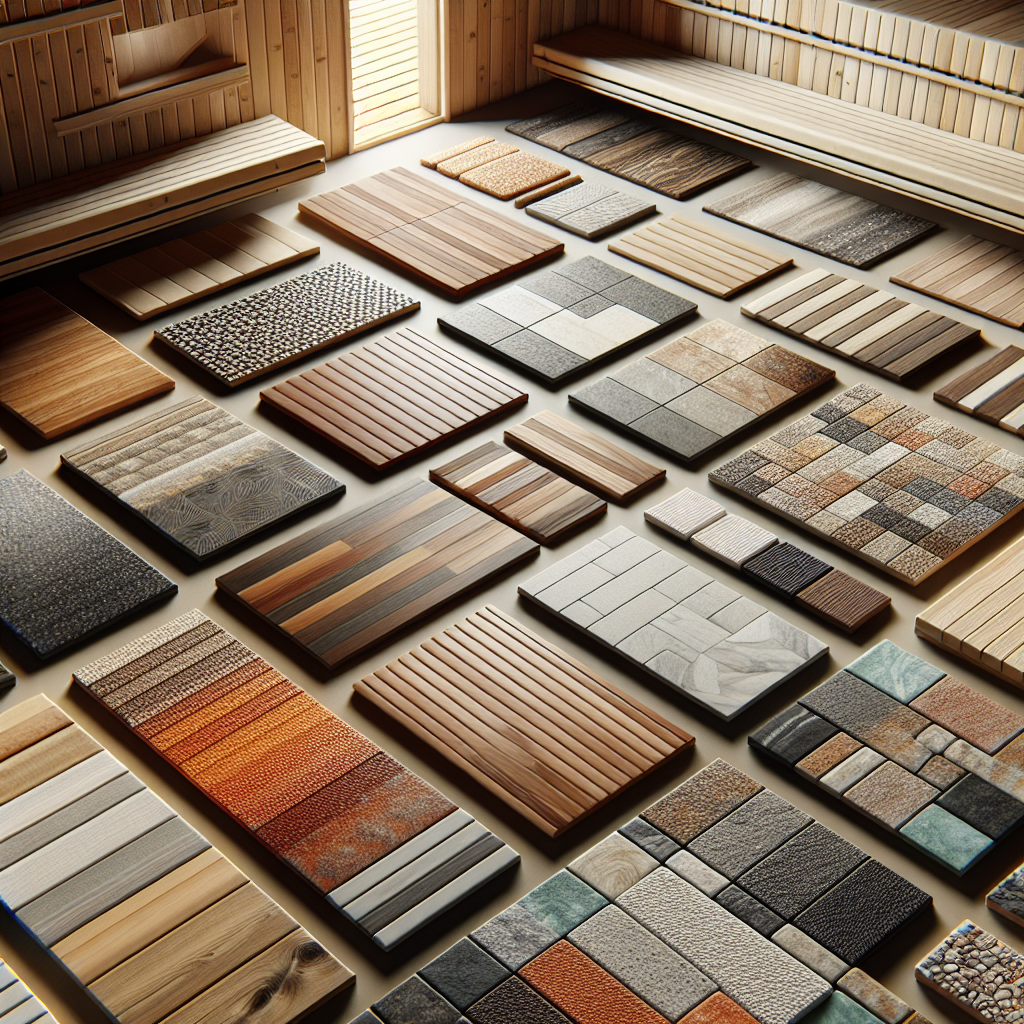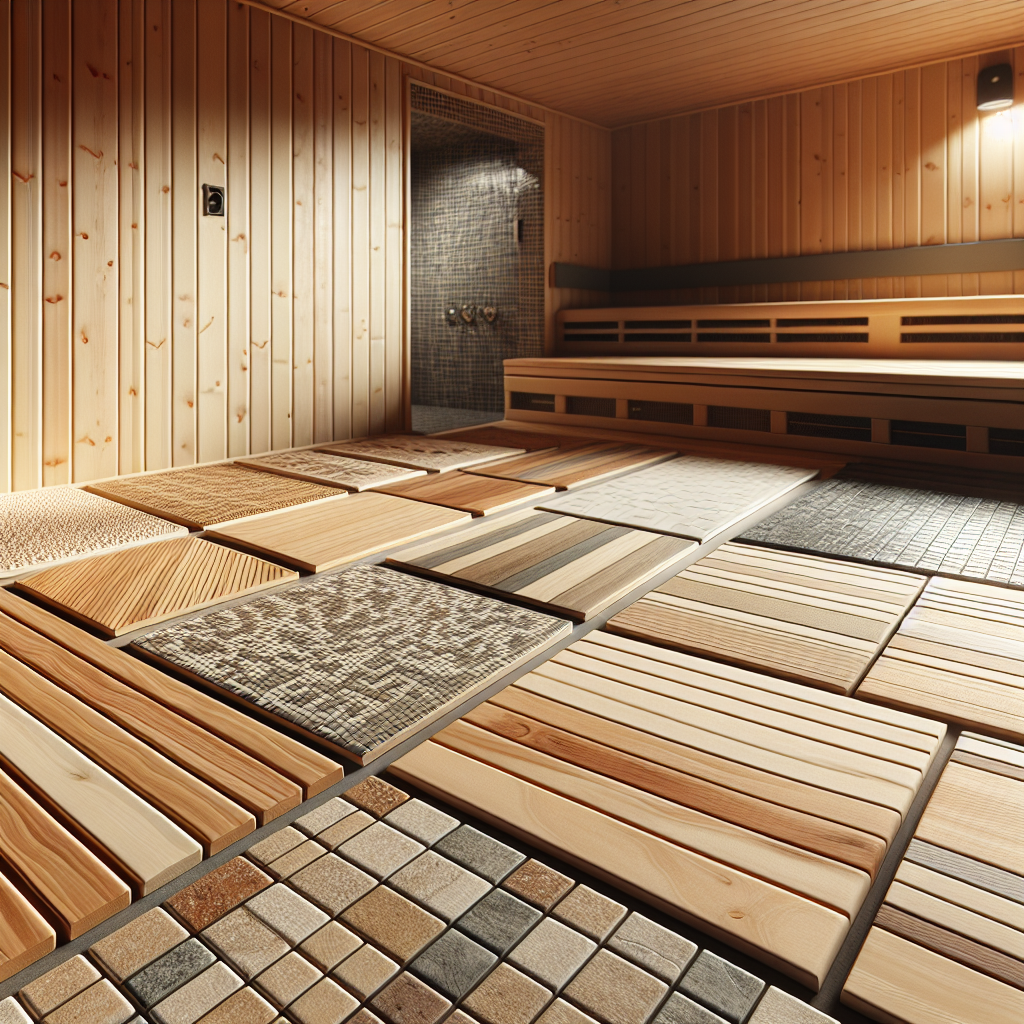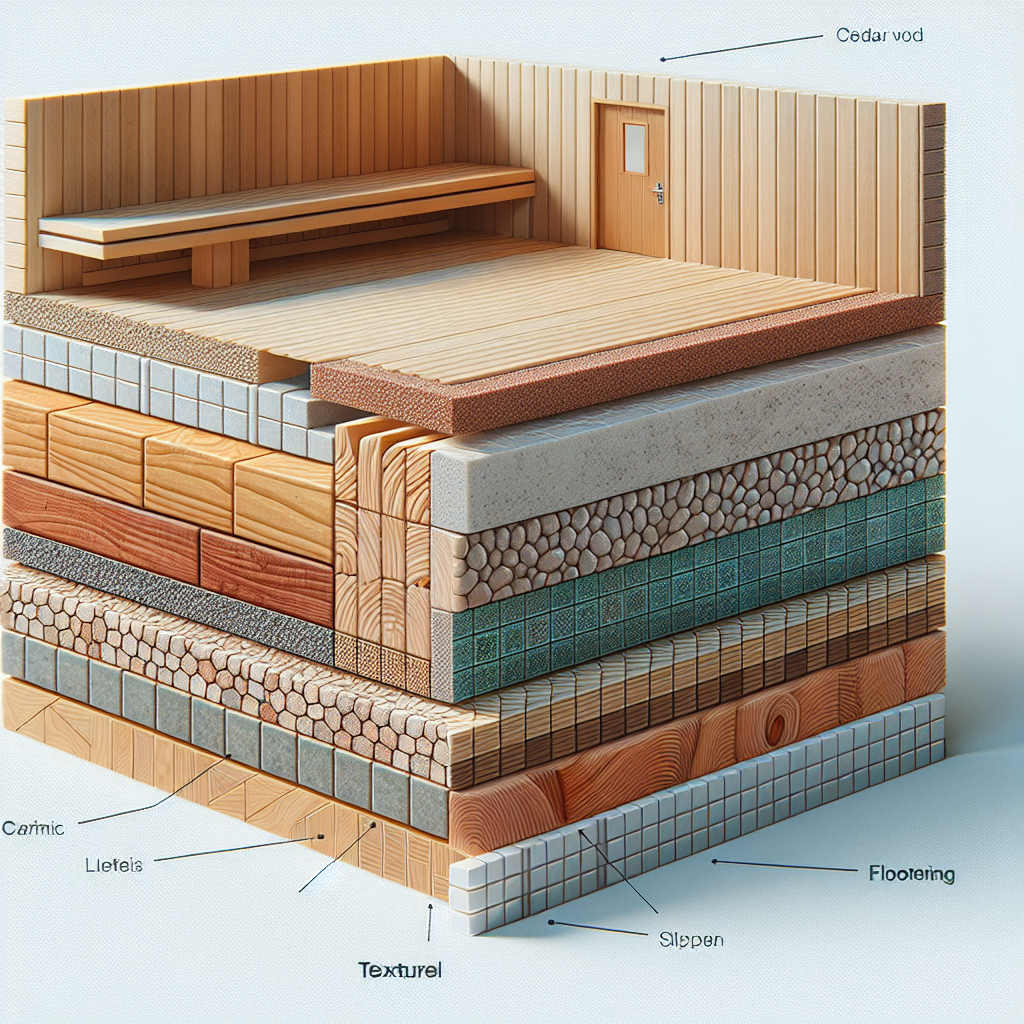The Best Flooring Options for Your Indoor Sauna
Creating the perfect indoor sauna experience begins from the ground up, with the best flooring for indoor sauna playing a pivotal role in ensuring durability, safety, and aesthetic appeal. High-quality flooring is essential not only for the comfort and longevity of your sauna but also for maintaining a hygienic environment resistant to moisture and heat. When selecting the ideal flooring, homeowners must consider materials that can withstand the unique conditions of a sauna - fluctuating temperatures, regular exposure to water, and the need for easy maintenance.
At Saunas.com, we understand the importance of every detail in your home sauna setup. That's why we've committed to guiding you through the process of finding the best flooring options that meet our high standards of quality and are proudly made in the USA. From the natural warmth of wood to the sleek finish of tiles, we'll explore the various materials that can enhance your sauna's functionality and overall design.
If you're looking to upgrade your sauna with premium flooring, or have any questions about which option is right for you, Email us or call 888-503-8157. Our team of experts is ready to help you make an informed decision that will elevate your sauna experience for years to come.
Essential Features of Sauna Floor Materials

When selecting the best flooring for an indoor sauna, certain essential features must be taken into account to ensure optimal performance and safety. The materials chosen should be inherently resistant to moisture to prevent warping, rotting, or mold growth, which are common issues in the high-humidity environment of a sauna. Additionally, durability is crucial, as the floor must be able to endure the regular wear and tear of foot traffic, as well as the extreme temperatures that saunas often reach.
Another critical feature is the non-slip texture of the flooring. Safety is paramount, and a slip-resistant surface is necessary to minimize the risk of accidents in a wet environment. Thermal properties are also important; materials that can provide insulation will contribute to the efficiency of the sauna, helping to maintain the desired temperature with less energy consumption. Lastly, the ease of cleaning and maintenance should be considered to keep the sauna hygienic and inviting without excessive effort.
Each of these features plays a significant role in the performance and enjoyment of your indoor sauna. As we delve into the specifics of various flooring options, these criteria will be our guide in recommending the materials that align with our commitment to offering only the highest quality products for our customers.
Top Flooring Choices for Indoor Saunas
Among the top flooring choices for indoor saunas, certain materials consistently stand out for their suitability and excellence. Western Red Cedar is a favorite, known for its natural resistance to decay and pleasing aroma, which enhances the traditional sauna experience. It also has excellent insulation properties, keeping the heat in and the cold out.
Ceramic and porcelain tiles are also popular due to their water resistance and ease of cleaning. When choosing tiles, it's important to select those with a textured surface to prevent slipping. Additionally, tiles can be heated to provide a comfortable, warm surface underfoot.
Concrete flooring is prized for its durability and modern aesthetic. It can be sealed to be water-resistant and textured to be slip-resistant. Stone flooring is another option that offers similar benefits, with the added advantage of natural variations in color and pattern that create a unique and luxurious look.
Lastly, vinyl flooring designed for wet environments can be an economical and practical choice. Advanced vinyl products can mimic the look of wood or stone and provide a waterproof and slip-resistant surface that withstands the sauna's heat and moisture.
Each of these materials can serve as an excellent foundation for your indoor sauna, ensuring long-lasting performance and satisfaction. In the subsequent sections, we’ll explore these options in greater detail to help you make an informed decision for your own sauna sanctuary.
Comparing Wood, Tile, and Composite Flooring

When choosing the best flooring for an indoor sauna, it's crucial to compare the characteristics of wood, tile, and composite materials. Wooden floors, particularly those made from cedar or other softwoods, are traditionally used in saunas for their warmth and natural beauty. They are comfortable underfoot and have the innate ability to manage moisture effectively, which is essential in a sauna environment.
Tile flooring, on the other hand, offers a different set of benefits. Ceramic and porcelain tiles are highly durable and resistant to moisture, making them easy to maintain. Their ability to retain heat can contribute to the overall warmth of the sauna. However, they can be cold to touch when not heated, and their hard surface may not be as comfortable as wood when sitting or lying down.
Composite flooring is a modern alternative that combines the benefits of both wood and synthetic materials. Composite flooring is often designed to be waterproof and highly durable, resisting warping and damage from moisture. It can also mimic the appearance of wood, providing aesthetic appeal without the same level of maintenance. Nevertheless, it's important to ensure that any composite material used in a sauna is rated for high temperatures and humidity.
Each flooring type has its own set of advantages and potential drawbacks. Homeowners must weigh factors such as comfort, maintenance, durability, and aesthetics when making a decision. The right choice will align with the individual's personal style, usage patterns, and expectations for their indoor sauna experience.
Installation Tips for Sauna Flooring

Proper installation is key to maximizing the performance and longevity of your sauna's flooring. Before beginning the installation process, it is essential to ensure that the subfloor is level, clean, and dry. High-quality vapor barriers and insulation should also be considered to prevent moisture damage and enhance heat retention.
For wooden sauna floors, it's important to leave a small gap between the planks and the wall to accommodate wood expansion due to heat and moisture. This prevents warping and maintains the integrity of the floor. Moreover, using stainless steel screws or nails is recommended to avoid corrosion caused by the sauna's humid conditions.
When installing tile flooring, applying a thin-set mortar specifically designed for high-temperature environments is crucial. The tiles should be laid out and spaced evenly to ensure a uniform look. Additionally, selecting a grout that is mold-resistant and capable of withstanding high temperatures will help maintain the floor's appearance and hygiene.
Composite flooring often comes with a click-lock system, simplifying the installation process. It's essential to follow the manufacturer's guidelines closely and to check that all pieces are securely connected. As with wood, leaving expansion gaps around the edges can help prevent buckling from temperature fluctuations.
Regardless of the flooring type, it is advisable to use materials and installation techniques that can endure the sauna's unique environment. Hiring a professional installer with experience in sauna flooring can also ensure that your flooring is installed correctly and safely, providing peace of mind and a flawless finish.
Maintenance and Care for Long-lasting Sauna Floors

To ensure the longevity and aesthetic appeal of your sauna flooring, regular maintenance and care are essential. It begins with routine cleaning to remove dirt and absorbent materials that may have accumulated on the floor. For wooden floors, this means using a soft brush or mop and a cleaner that's specifically formulated for wood in high-moisture environments.
Tiled floors may require a gentle scrub to keep the grout lines clean and maintain their water-resistant properties. It's advisable to use a pH-neutral cleaner to prevent damage to both the tiles and the grout. Additionally, periodically checking the grout for any signs of cracking or deterioration is important for preventing water damage.
For composite floors, regular sweeping and occasional mopping with a mild detergent should suffice. However, it's crucial to avoid abrasive cleaners or pads that could scratch the surface. Inspect your composite flooring for signs of wear or damage, especially in high-traffic areas.
Regardless of the flooring type, it's also vital to promptly repair any damage to prevent moisture from seeping through and causing more significant issues. Always refer to the manufacturer's care instructions for specific guidance on maintaining your particular flooring material.
At Saunas.com, we understand the importance of maintaining a pristine sauna environment. Should you have any questions about caring for your sauna floors or require assistance selecting the right maintenance supplies, don't hesitate to Email us or call 888-503-8157. Our experts are here to help you keep your sauna in top condition for years to come.
